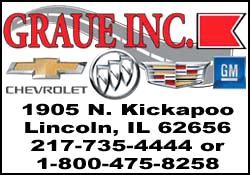|
Column: Automatic
Medicare Advantage enrollment draws scrutiny
 Send a link to a friend
Send a link to a friend
 [September 15, 2016]
By Mark Miller [September 15, 2016]
By Mark Miller
CHICAGO (Reuters) - The Medicare enrollment
process is fraught with complicated choices - but one big decision could
be made for you automatically by a health insurance company if you are
not on your toes.
A little known rule allows some health insurance companies to
automatically sign people up for Medicare Advantage plans - the managed
care alternative to traditional Medicare. Under so-called seamless
conversion, an insurer can seek permission from the Centers for Medicare
& Medicaid (CMS) to auto-enroll members of its non-Medicare insurance
plans when they reach 65, the age of Medicare eligibility.
Auto-enrollment might be convenient, but it short circuits one of the
most important choices to be made when signing up for Medicare - whether
to go with traditional fee-for-service Medicare, or an Advantage plan.
Advantage plans offer some cost saving and usually include prescription
drug coverage. But the majority of Medicare enrollees use traditional
Medicare. And thorough shopping for an Advantage plan requires a careful
review of the networks of health providers and prescription drug
coverage to make sure they are the best fit for an individual’s health
needs.
Congress gave the green light for seamless conversion enrollment in
1997, and CMS established rules to allow them in 2005. Health insurance
companies can seek permission to carry out seamless conversions of
members of their individual, public exchange or Medicaid managed care
plans.

Medicare has not released information on the prevalence of seamless
conversion. But the practice is drawing scrutiny from consumer advocate
groups, who are pushing for more transparency from CMS on the companies
and locations where the process has been approved.
“It flew under the radar for quite a long time, and it’s just beginning
to gain more attention,” said Gretchen Jacobson, associate director of
the program on Medicare Policy at the Kaiser Family Foundation.
A Medicare spokesman said data will be released later this year
indicating which insurance companies are doing seamless conversion, and
where. CMS also is “refining” its procedures for processing seamless
conversion applications from insurance companies.
Some advocates also are urging CMS to strengthen the rules on
notifications that must be sent to enrollees who find themselves
automatically signed up in an Advantage plan. The current rules require
insurance companies only to provide a notification of enrollment by mail
60 days prior to seamless conversion. The notification must include
clear information on how to opt out before coverage begins. But
mailboxes typically overflow with Medicare marketing pitches around
one's 65th birthday, making it easy to miss a notice of seamless
conversion.
"Our preference would be that the process requires an active choice,
that you must respond to an invitation for a seamless enrollment," said
Joe Baker, president of the Medicare Rights Center, a consumer advocacy
organization.
Health insurance companies argue that seamless conversion is convenient
for its members, and has been well-received.

[to top of second column] |

Doctors and nurses work on a patient in the Ryder Trauma Center at
Jackson Memorial Hospital in Miami, Florida September 30, 2013.
REUTERS/Joe Skipper

Aetna Inc is starting seamless conversion in 17 counties in Florida this
fall for existing members of its individual or public exchange plans who
become eligible for Medicare. “We will match them to a Medicare
Advantage plan that is very similar to what they’re used to and enroll
them automatically,” a spokesman said. The company’s notification
process goes beyond the federal requirements, including a phone call to
make sure the notification letter was received, read and understood.
UnitedHealthcare, meanwhile, recently received CMS approval to use seamless
enrollment for its Medicaid members in Arizona into its Advantage plan for
people who are dually eligible for Medicare and Medicaid. The company also says
it will be following up its mailings with a phone call.
A CMS spokesman says it has seen “very few issues or complaints” from consumers
thus far regarding seamless enrollment. The Medicare Rights Center, which
operates a toll-free hotline on Medicare for consumers, also has not seen a
large volume of complaints or problems, Baker said.
Baker thinks most seamless conversion activity involves dual-eligible Medicaid
plan members - and that is sensible from a public policy standpoint. “It’s a
vulnerable population,” he said, “and you want to make sure there’s no gap in
coverage because it could really affect a person’s health.” But convenience
alone is a questionable policy goal, he adds.
If anything, the seamless conversion debate underscores the complexity of the
transition into Medicare. Back in the days when everyone filed for Social
Security at age 65, enrollment for Medicare was automatic.
But with more people working longer and delaying their Social Security filing,
the transition may involve shifting from employer coverage or from a public
marketplace policy. “The transition is more fraught,” Baker said. “It’s really
important to open all your mail - especially anything that comes from an
insurance company that already covers you.”

Free help with enrollment is available from Medicare’s toll-free line
(1-800-MEDICARE), the Medicare Rights Center (1-800-333-4114) or your local
State Health Information Program. Find your local program here (bit.ly/1OU0sfN)
.
(The writer is a Reuters columnist. The opinions expressed are his own.)
(Editing by Matthew Lewis)
[© 2016 Thomson Reuters. All rights
reserved.] Copyright 2016 Reuters. All rights reserved. This material may not be published,
broadcast, rewritten or redistributed. |